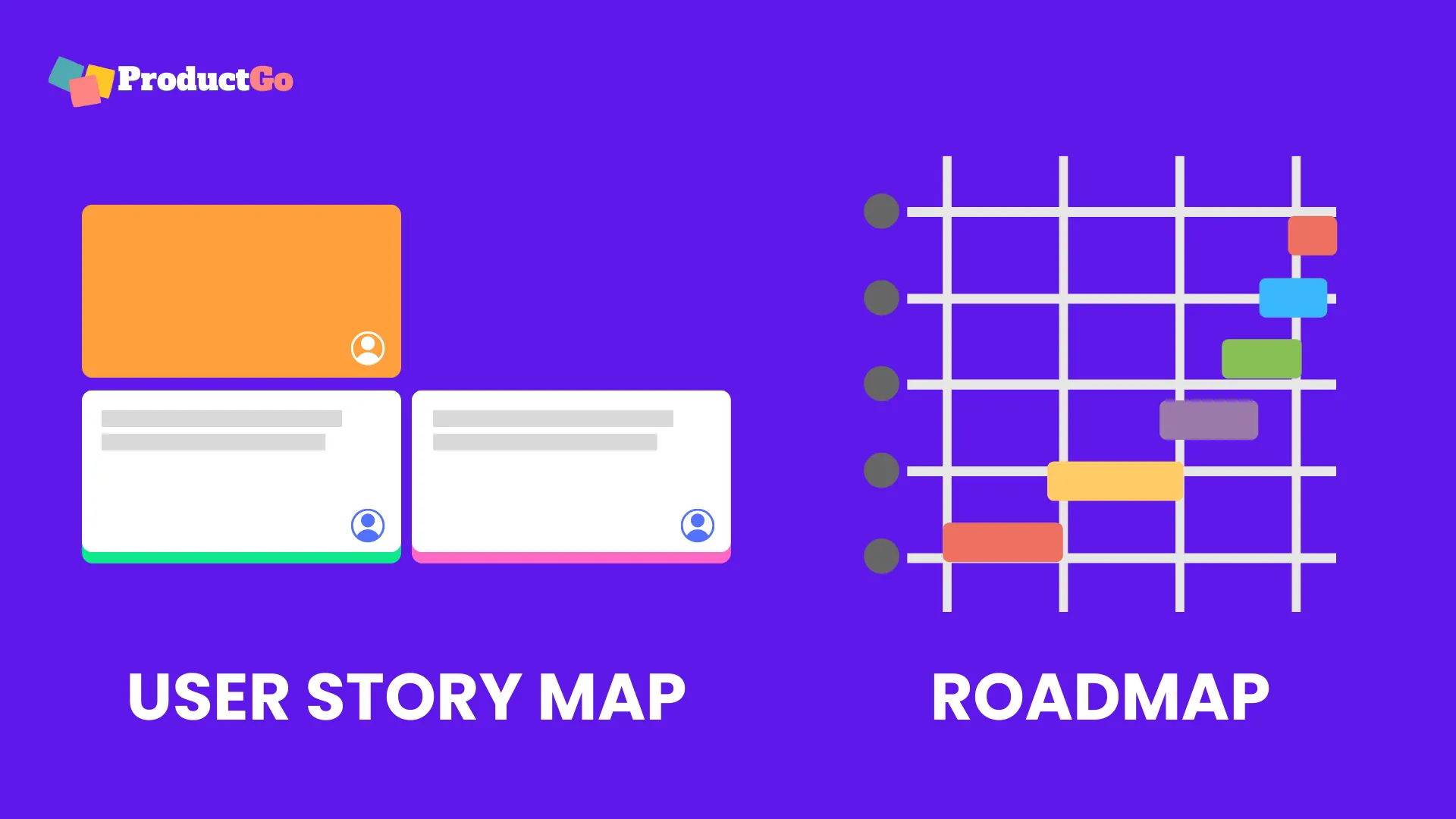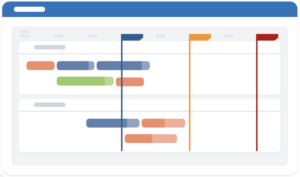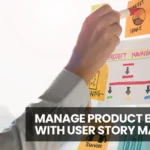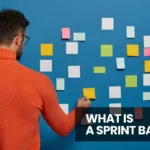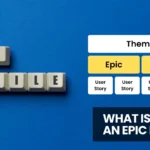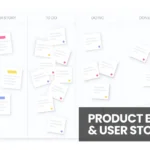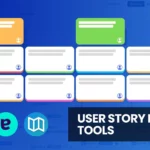Even though flexibility and adaptability are two buzzwords that follow any discussion on Agile, they don’t deter the importance of proper planning for developing a successful product. Two tools that lead this discussion on planning in Agile are roadmaps and user story maps.
Roadmaps and user story maps are not the same despite the widespread misconception in the Agile community. Neither do they overlap in functionality nor serve the same purpose. Agile roadmaps and user story maps are, in fact, two equally important, indispensable tools for an Agile team when it comes to determining a product’s future direction. Therefore, understanding how these two tools contrast and how to use them together will help you develop more effective and cohesive plans for future projects.
→ Related content: What is User Story Map?
Table of Contents
Agile roadmaps vs. user story maps: what are the differences?
Starting with their purpose and functionality, Agile roadmaps and user story maps have several key differences that separate one from the other. Let’s take a closer look at them.
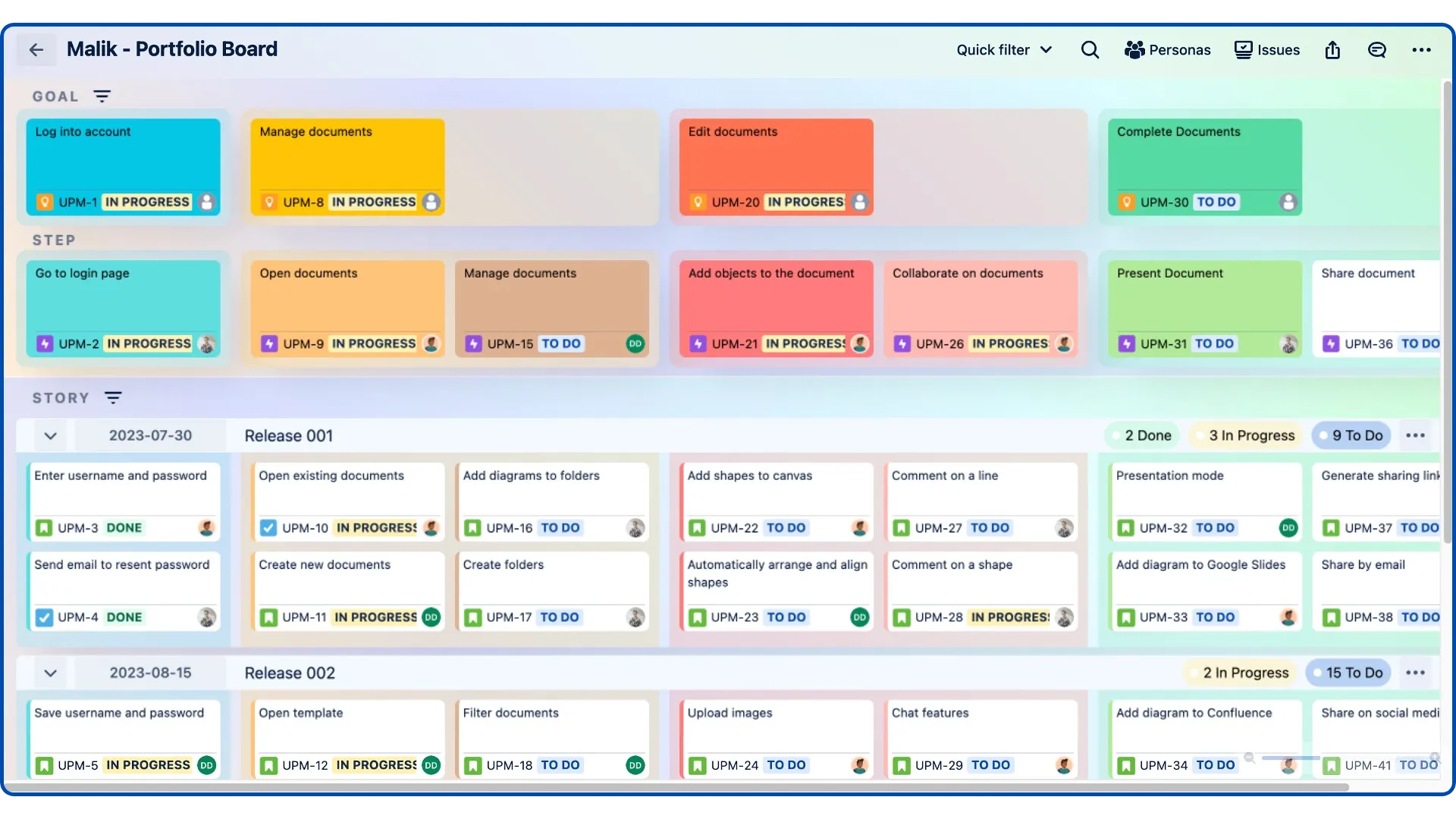
Story mapping feature of Agile User Story Map and Roadmap for Jira
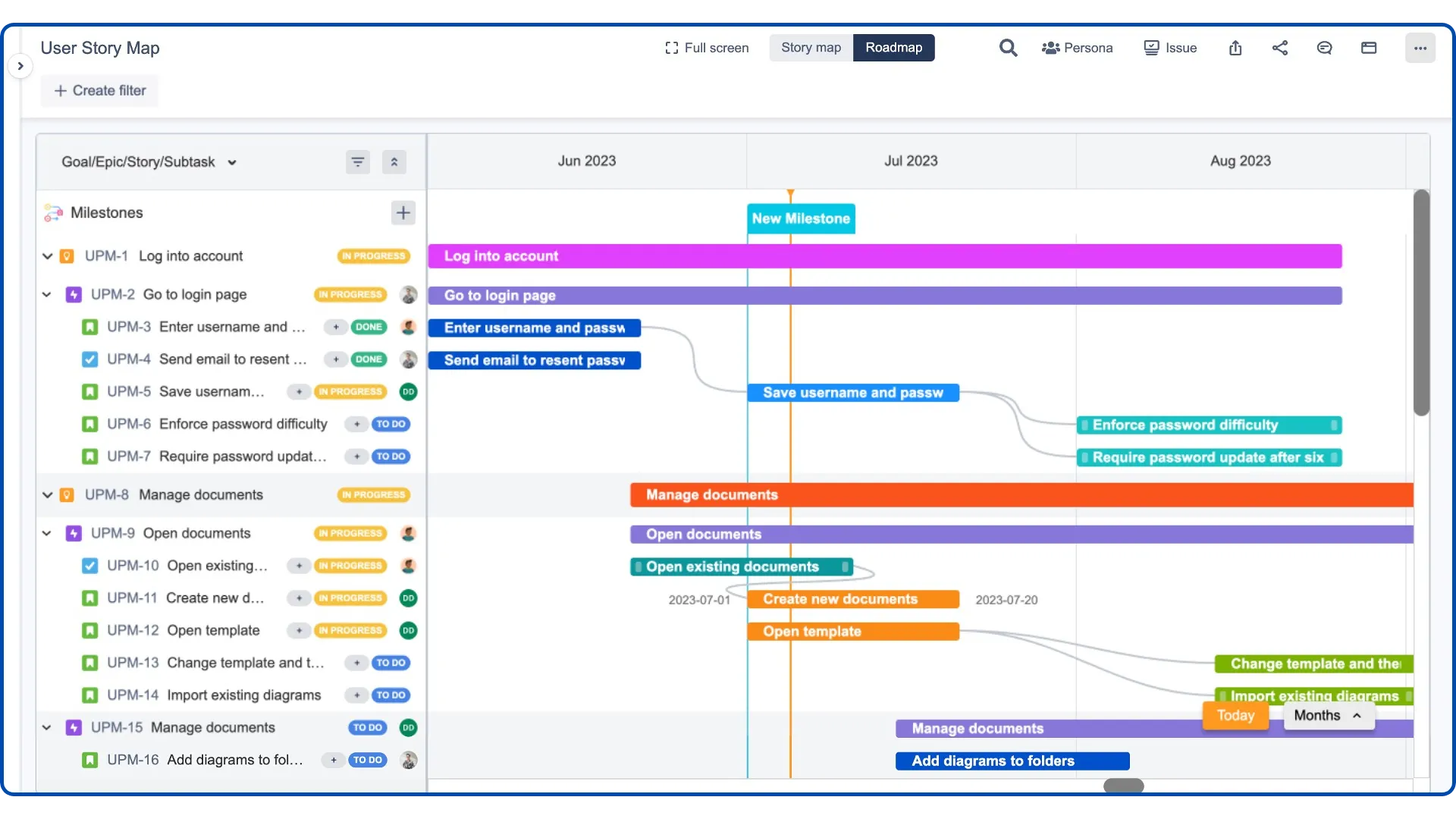
Roadmap feature of Agile User Story Map and Roadmap for Jira
Tactics vs. Strategies
Even though both roadmaps and story maps are tools for product planning, there’s one significant difference between how each one approaches a planning process.
The roadmap, as a tool that draws the plan for a product’s evolution, helps the product stay competitive amid shifting market needs. It focuses more on the strategies you can use to reach business goals while satisfying customers in the short to long term.
The direct opposite of the strategic roadmap is another popular Agile tool, the backlog. It entirely focuses on the tactics of developing a product: what features to develop, how to develop, what technologies to use, etc. The user story map is something that falls in between the backlog and roadmap to bridge the gap between the two. It shows how to use the tactics in a way that falls in line with product strategies.
Given its attention to granular-level features and tasks, a story map is still largely tactical. However, its emphasis on how the customer interacts with the product and what benefits them gives it a strategic outlook to tie it to the roadmap.
→ Related content: Build products that your customers love with User Story Map in Jira
High-level vs. low-level visualization
The user story map’s focus on organizing product features and tasks according to their priority makes it a comparatively low-level visualization of the development process. The roadmap, conversely, focuses on the high-level details of the process, such as product goals, releases, and milestones. It also captures the larger market context that includes competitive products, marketing trends, and evolving customer needs during the planning stage. Therefore, you can think of an Agile roadmap as a tool that shows the big picture, whereas the user story map drills down to display execution-level details.
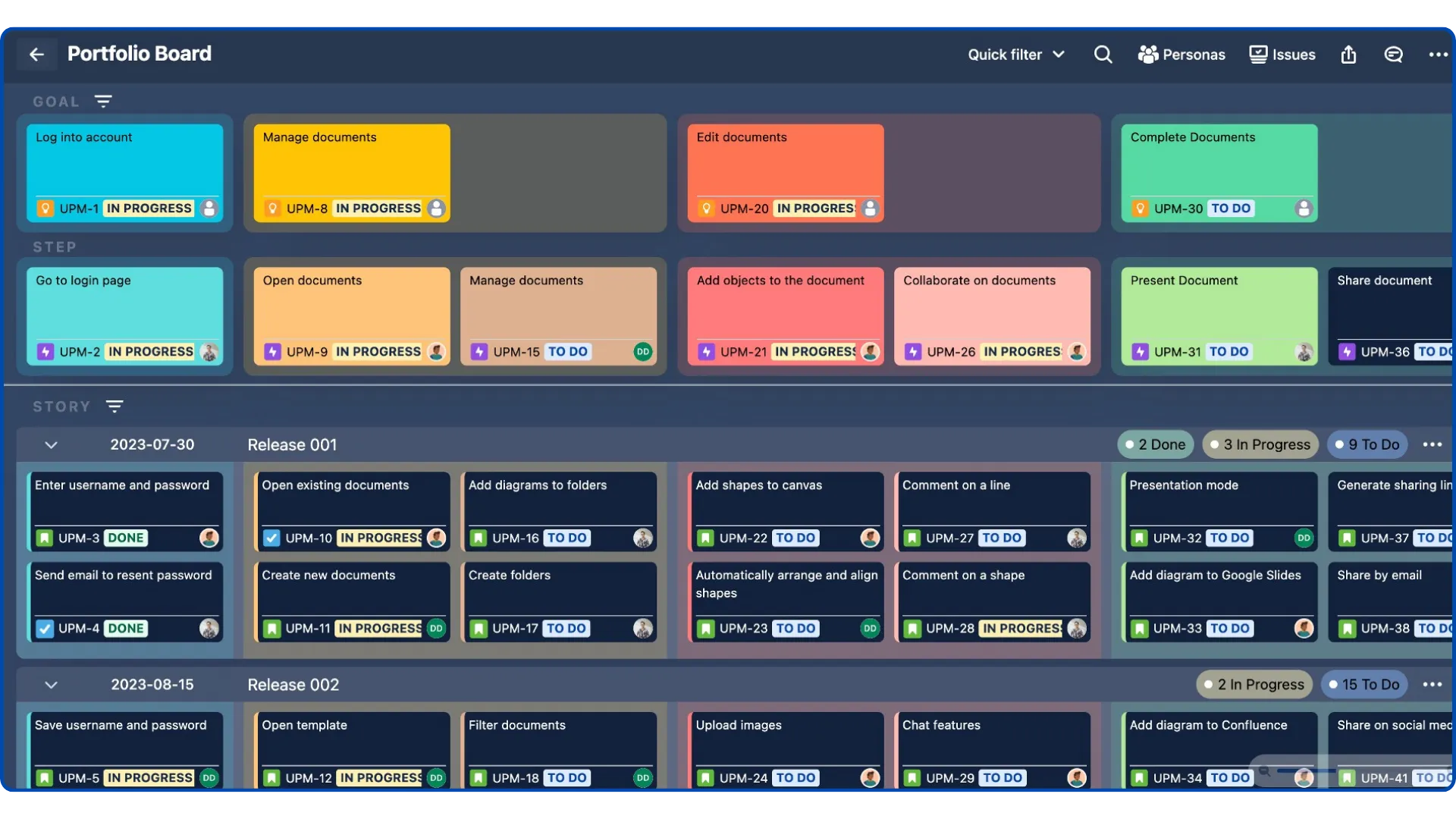
Collaborative vs. non-collaborative creative process
Creating a user story map that visualizes a user’s journey with a product is primarily a collaborative activity that calls for the participation of the product owner, product sponsors, development team, UX designers, marketing team, and several other stakeholders. This type of collaboration is needed given how a mapping session defines the product functionality down to a granular level.
On the other hand, creating a roadmap is a less collaborative process as it is, for the most part, the responsibility of the product owner. Even though the process does take stakeholder feedback, the product owner, or someone at a similar hierarchical level, reserves the right to make the final decisions. The rest of the personnel involved in development use the roadmap as a tool to visualize and convey the bigger picture behind the product.
Conveying messages to stakeholders
A product roadmap is an invaluable tool for relaying the product vision, strategies, and evolution plan to an audience consisting of different stakeholders with varying understanding of the market, product domain, and technical specifics. The high-level picture displayed by the roadmap smoothly conveys crucial information to the onlookers without overcomplicating its message.
Although it’s not uncommon to use story maps to let stakeholders build a clear understanding of the product, it’s a tool more suitable for an audience with shared technical knowledge. Otherwise, it could cause more confusion than providing clarification as intended.
The user story map is more beneficial to those directly involved in the development process for tasks like understanding implementation details, evaluating the project progress, planning sprints, and distributing work among teams.
→ Related content: User Story Template: How to write it with examples
Combine road mapping and user story mapping for a better outcome
So far, we have discussed the differences between roadmaps and user story maps to understand what purposes they serve in an Agile process and where to use them. But how can we link the roadmap and story map together in this system to build a comprehensive development plan for the product?

You can first start with creating the roadmap. It involves all the steps you’d usually follow in this process, including:
- Developing the product vision and strategy.
- Establishing product goals.
- Identifying product releases and milestones with relevant timelines, goals to achieve during each period, and features associated with each goal.
- Creating a roadmap that highlights the releases and milestones and displays the relevant goals as initiatives along the timeline.
Once the roadmap is complete, you can create the user story map with the help of user personas and user stories in your backlog. As product vision and strategy will already be developed in the previous process, you can now start to build the map’s backbone.
- Build the backbone and skeleton of the user story map.
- Add user stories in your backlog under relevant skeleton activities.
- Break down large user stories into simpler tasks.
- Rank the stories based on their priorities.
After these steps are completed, you can establish a connection between the roadmap and user story map by linking the features listed under each initiative to the tasks in the story map that implements them. After considering the planned releases and milestones listed in the roadmap, you can split the workload into sprints. As the final step, you can test the story map by walking the user journey from beginning to end with several stakeholders.
→ Enhance your project and product management with User Story Map and Roadmap tool for Jira by ProductGo
Conclusion
With the help of our Agile User Story Map & Product Roadmap for the Jira application, the task of connecting the story map and roadmap becomes only a matter of a few clicks. At the end of the process, you get a comprehensive plan for your product that covers both tactics and strategies involved in the development process. Using the application tools we provide, you can then review and update these maps, share them with stakeholders, and measure the development progress whenever you need without a hassle.

